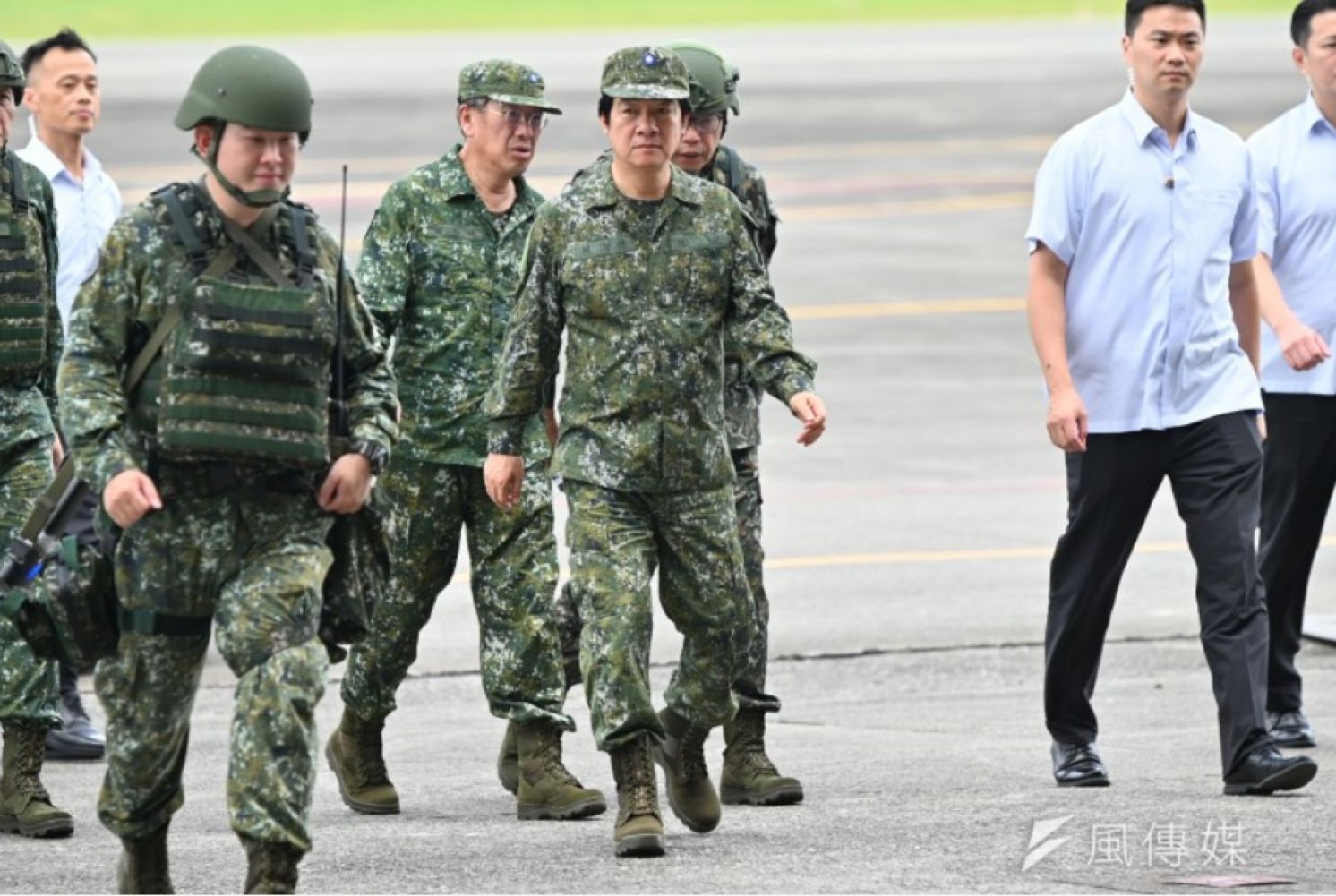
President Lai's Calculations Aim to Alter U.S.-China-Taiwan Relations
The Storm Media Editorial, March 26, 2025
After unveiling a comprehensive set of 17 major strategies on national security, President Lai Ching-te launched a series of military maneuvers—from the “Mini Han Kuang” exercises, the appointment of former Japanese Self-Defense Forces Chief of Staff Shigeru Iwasaki as Executive Yuan advisor, to salary hikes for voluntary soldiers. These actions were quickly deciphered by American media such as The Washington Post and The New York Times as calculated political moves meant to provoke Beijing—moves that have subtly altered the balance in U.S.-China-Taiwan relations. President Lai’s motivation, it appears, is to garner support from U.S. President Donald Trump’s political camp.
Posturing for War, Wagging the Dog
President Lai’s timing was strategic. On the eve of the 20th anniversary of China’s “Anti-Secession Law,” he convened a National Security Council meeting and gave a speech labeling China as a “hostile foreign force.” He announced the restoration of military tribunals and deportation of pro-China influencers—key elements of President Lai’s “17 strategies”—followed by military drills from March 17 to 21 known as “Combat Readiness Exercises” (aka “Mini Han Kuang”), signaling a posture of near-war readiness. Clearly, the Lai administration came prepared.
This pattern feels familiar. During her re-election campaign, former President Tsai Ing-wen challenged Chinese President Xi Jinping’s “Letter to Taiwan Compatriots.” When Chinese President Xi Jinping proposed a “One Country, Two Systems” formula for Taiwan, Tsai capitalized on public backlash by holding frequent press conferences to rally support—laying the groundwork for her eventual victory. Similarly, Prime Minister Shigeru Ishiba of Japan authorized the Akizuki-class destroyer to pass through the Taiwan Strait, Shigeru Iwasaki was appointed as advisor, and voluntary service benefits were increased—moves that appear to have been pre-planned.
While Taiwanese media largely interpreted President Lai’s “17 strategies” as a way to boost momentum for a mass recall campaign, international media viewed it as a well-timed political maneuver aimed at dominating the narrative in the U.S.-China-Taiwan triangle.
A Signal to U.S. Hawks, Betting Beijing Won’t React
In a recent Washington Post article titled “Taiwan Warns of Growing China Threat, in Part to Woo Trump Support,” it was observed that President Lai now refers to “China” rather than “mainland China” or “Beijing authorities”—a sign he’s testing red lines. The piece cited Eurasia Group’s China director Shanthi Kalathil, who suggested that President Lai is appealing to China hawks in Trump’s circle in hopes of securing more support for himself and his Democratic Progressive Party (DPP).
The New York Times echoed this sentiment in its March 23 article “Why Lai Ching-te Is Taking a Hard Line Against Beijing Now,” noting that Lai may believe Beijing is trying to ease tensions with Mr. Trump and therefore would limit retaliatory actions toward Taiwan. Ryan Hass of the Brookings Institution believes President Lai’s current hawkish stance is intended to regain narrative control and put critics on the defensive. The article further argues that President Lai’s timing with the “Anti-Unification 17 strategies” is based on his judgment that Beijing won’t act rashly ahead of the anticipated Trump-Xi summit—thus seizing the opportunity to make a risky play.
“Lai Skepticism” on the Rise, PLA Issues Warning
Both the Washington Post and New York Times analyzed the political risks of President Lai’s “17 strategies” within the broader context of U.S.-China relations, revealing calculated political motives—a departure from past reporting. This suggests a growing concern in the United States known as the “Lai skepticism” narrative. Though Taiwanese national security officials have dismissed it as cognitive warfare and mere rumor-mongering, the suspicion hasn’t died down. In fact, it’s now being directly challenged by the Make America Great Again (MAGA) wave.
From: https://www.storm.mg/article/5345329?mode=whole
〈Back to Taiwan Weekly Newsletter〉